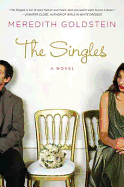
| Publisher: | Plume | |
| Genre: | Fiction, Contemporary Women | |
| ISBN: | 9780452298057 | |
| Pub Date: | April 2012 | |
| Price: | $15 |
| Fiction |
by Meredith Goldstein
While it may be difficult to attend a wedding alone, imagine the pressure of having to scrounge up a date when you've got nobody on the horizon. Enter The Singles, Meredith Goldstein's debut novel about the most fascinating people at the wedding--and they aren't the bride and groom. As Goldstein traces one day in the lives of five single people at a mutual friend's nuptials, what could have been a mishmash of concurrent stories ends up coming together seamlessly.
The best part of The Singles is the surprises. This debut novel doesn't follow the prescribed formula for romantic comedic fiction, and Goldstein--an advice columnist and society page journalist for the Boston Globe--doesn't trot out the tired concept that love was under their noses the whole time. The character of the bride is mostly ignored, which is a nice touch. After all, once you make it the altar (and until your husband begins his first affair or loses all your money on an online gambling addiction), your story has pretty much already been told. Actually, the novel's wedding is thoroughly upstaged by blitzed bridesmaids giving long-winded toasts and various guests gettin' jiggy in the honeymoon suite. The astonishing ending provides a satisfying crunch, too. The Singles crafts a tale about an wedding that will make anyone RSVP "yes, yes, yes." --Natalie Papailiou, author of blog MILF: Mother I'd Like to Friend
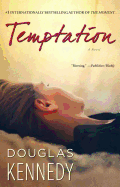
| Publisher: | Atria | |
| Genre: | Fiction, Psychological, Literary | |
| ISBN: | 9781451602104 | |
| Pub Date: | April 2012 | |
| Price: | $16 |
| Fiction |
by Douglas Kennedy
As Douglas Kennedy's Temptation opens, David Armitage has been trying for years to break into the screenwriting game. (In a nice touch, he's working at the West Hollywood bookstore Book Soup.) Then, a production company buys his script. It's picked up as a series, and David is hired on as the executive story supervisor.
Kennedy fast-forwards through David's meteoric rise, where he abandons the marriage that had been strained by his previous failures and takes up with a hot, young network exec, then slows the story down again as David receives an invitation from a reclusive billionaire. Philip Fleck made his fortune in investing, but he's always wanted to make movies. Now he has one of David's scripts, and he wants to turn it into a 21st-century version of Pasolini's notoriously, deliberately obscene Salo.
At first glance, Temptation looks like a smart, snappy update of the Jackie Collins/Jacqueline Susann novel, with sleazy brokers who can quote Adam Smith by memory and illicit romances sparked by quotations from T.S. Eliot and Emily Dickinson. Poke at the glitzy surface details, though, and you'll begin to see a lean, mean noir thriller, as a gossip columnist's accusation of plagiarism snowballs into David losing his job, his girlfriend and even his Emmy. It doesn't take too long to figure out that Fleck is behind the systematic dismantling of David's life.
In some ways, including the first-person narration, David's existential crisis and the path he finds out of it echo Kennedy's debut novel, The Big Picture (1996). As Kennedy continues to tackle the theme of upended lives, Temptation demonstrates a literary confidence that lifts his stories above much of the competition. --Ron Hogan, founder of Beatrice.com
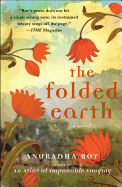
| Publisher: | Free Press | |
| Genre: | General, Fiction, Historical, Literary | |
| ISBN: | 9781451633337 | |
| Pub Date: | April 2012 | |
| Price: | $15 |
| Starred | Fiction |
by Anuradha Roy
The Folded Earth and its themes of love, loss and finding oneself may initially remind some readers of chick lit, but Anuradha Roy rises above that genre's traditional machinations with a powerful piece of fiction that weaves together history and politics, tugging at the heartstrings while reveling in the hope that comes at the end of a difficult journey.
Roy's (An Atlas of Impossible Longing) story takes place in the idyllic Himalayan hill town of Ranikhet, a village evocative of the mystical Shangri-La, where the young Hindu widow Maya seeks refuge and solace after the death of her husband in a mountaineering accident. Maya's life revolves around her duties as an inept missionary school teacher and a small cast of characters--the sweet, naive peasant girl Charu, whom Maya teaches to read and write so that she may communicate with a secret lover in Delhi; Charu's gossipy, superstitious grandmother, Ama, and her animal-whisperer uncle, Puran; and Maya's reclusive landlord, the Diwan Sahib, who acts as a companion and voice of reason. Maya enters into a burgeoning romance with Diwan's mysterious nephew, Veer Singh, whose sudden reappearance opens old wounds and precipitates the monsoonal changes that threaten to turn Ranikhet into a political circus.
Roy's confident prose echoes the sedate harmony Maya finds in her new small town existence. Even at its most conflicted moments, The Folded Earth manages to maintain a credibility that would be lost in lesser hands. This elegiacal novel of love, loss and personal identity is a stunning achievement for this rising star of Indian literary fiction. -- Nancy Powell, freelance writer

| Publisher: | Viking Books | |
| Genre: | Biographical, General, Fiction, Romance, Historical | |
| ISBN: | 9780670023493 | |
| Pub Date: | April 2012 | |
| Price: | $26.95 |
| Fiction |
by Rosie Sultan
From the time she learned to speak via finger-spelling, Helen Keller--blind and deaf since she was a toddler--was regarded as a miracle. Her hunger for learning and tireless work ethic made her famous; her gifts to charity made her beloved. Until she hired Peter Fagan as her private secretary in 1916, no one expected her to fall in love.
Debut novelist Rosie Sultan's Helen Keller in Love spins a tale of forbidden love, invoking scents, textures and tastes on every page to show how Helen "saw" the world. She grounds the story in well-known incidents from Helen's childhood, but draws on later biographies, speeches and letters to show Helen as a woman, intelligent and determined but forced by her handicaps to be dependent on her family and employees.
Contrary to its title, the book revolves around Helen and her teacher, Anne Sullivan Macy, who have spent their lives together and know each other so well. Both women are well-drawn, while Peter Fagan is an unsettling shadow, almost two-dimensional. But Sultan skillfully expresses Helen's main frustrations: at the public for refusing to take her seriously when she speaks on political issues unrelated to blindness, and at her family and friends for refusing to see her as a grown woman, with a woman's desires. Helen Keller in Love holds readers' attention with a fresh depiction of a woman famous for overcoming her physical handicaps, forced to fight for her right to love. --Katie Noah Gibson, blogger at Cakes, Tea and Dreams
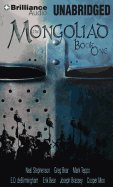
| Publisher: | 47north | |
| Genre: | General, Fiction, Fantasy | |
| ISBN: | 9781612182360 | |
| Pub Date: | April 2012 | |
| Price: | $14.95 |
| Science Fiction & Fantasy |
by Neal Stephenson, Greg Bear, Mark Teppo, E.D. deBirmingham, Erik Bear, Joseph Brassey, Cooper Moo
Seven writers are listed on the cover of The Mongoliad: Book One, but for many readers it will feel most like a Neal Stephenson novel--specifically, the sub-genre of sprawling historical epic that made his Baroque Cycle trilogy so much fun. This story, however, is set in an alternate 13th century, where the sons of Genghis Khan have begun to push the Mongol armies into Europe. As a small band of warrior monks from the Ordo Militum Vindicis Intactae ("Knights of the Virgin Defender") makes their way across two continents to assassinate Ögedei, the current Khan of Khans, at his stronghold in China, a young Mongol soldier must negotiate his own position in Ögedei's court--charged with protecting his emperor, but with no idea whom he can trust.
The Mongoliad has been digitally serialized in weekly installments (with multimedia enhancements and fan participation) since September 2010. This means that individual chapters crackle with a fast-paced energy, particularly the vigorous action scenes. One gladiatorial battle, between a Christian monk and a Japanese prisoner-of-war, is a showcase for the authors' research into archaic martial arts techniques. Unfortunately, it also means that this initial print installment ends not just in media res, but on an abrupt cliffhanger that feels rather low-key considering the stakes that have been established. The story of the Mongoliad is consistently engrossing right up to these scenes, which makes the non-ending all the more frustrating. Of course, if you can't hold out until Book Two is published, there's always the Mongoliad website.... --Ron Hogan, founder of Beatrice.com
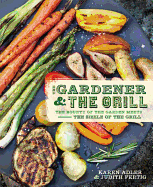
| Publisher: | Running Press | |
| Genre: | Methods, Cooking, Barbecue & Grilling | |
| ISBN: | 9780762441112 | |
| Pub Date: | April 2012 | |
| Price: | $20 |
| Food & Wine |
by Karen Adler, Judith Fertig
If you're weary of cookbooks sprinkled with "must" and "should" and references to rare ingredients, turn to the down-to-earth recipes from The Gardener and the Grill. Karen Adler and Judith Fertig will inspire you to plant a garden--even it it's just a few pots--and hose down the barbecue with their guarantee of four seasons filled with good, healthy eating.
While Adler and Fertig, the "BBQ Queens" of TV food shows, encourage complementing the solitary hobby of gardening with the social benefits of a barbecue, devotees of farmers markets will also find much to savor, with ingredients ranging from early snap peas to butternut squash. "Flexitarians" (semi-vegetarians) will delight in the many meatless entrees: only one of the five chapters features meat, but the grilled pizza, sandwiches and breads will satisfy any appetite. Soups are included, made with leftover grilled veggies; fruits from regions nationwide--apples to citrus--find a place on the grill, too.
The "tong-wielding" duo intersperse tips among the recipes. (A pound of asparagus is about what you can encircle with both hands, for example; you can use companion planting techniques in your garden to pair crops that will repel pests or enhance the soil for their "buddy plants.") Their user-friendly cookbook isn't just lovely to look at: it limits each recipe to a page, doable for even the novice griller, while detailing more esoteric aspects of cooking over fire such as planking, smoking or grill-roasting. Browse The Gardener and the Grill along with your seed catalogues, but NOT when you're hungry! --Cheryl Krocker McKeon, bookseller
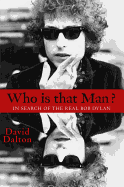
| Publisher: | Hyperion | |
| Genre: | General, Biography & Autobiography, Entertainment & Performing Arts | |
| ISBN: | 9781401323394 | |
| Pub Date: | April 2012 | |
| Price: | $26.99 |
| Biography & Memoir |
by David Dalton
Most biographies of Bob Dylan co-opt the name of one of his songs for their titles, so Who Is That Man? stands out just for its title. In fact, this book is not an average biography. Nor was Bob Dylan an average man. As David Dalton makes clear, it's hard to know whether "Bob Dylan" has existed at all.
Born Robert Zimmerman in Hibbing, Minn., the man who became Bob Dylan has always been a moving target, as ambiguous and yet as vivid as his lyrics. Dalton captures this chameleon spirit through an in-depth look at Dylan's life, work and constant self-reinvention that follows in his subject's lyrical, figurative style. Dalton describes repeatedly how Dylan's perception of himself, and his accompanying public persona, often shifted in the middle of a project, so that by the time an album capturing one Bob Dylan came out, the "real" Bob Dylan had become someone else entirely--making "who is that man?" a constant quandary.
In his mutability, his repeated reincarnations and his constant willingness to lie (even Dylan's own memoir, Chronicles, is said to be a put-on), Bob Dylan reflects a quintessentially American tradition: overcoming life's obstacles by becoming someone else. Dalton traces this habit throughout Dylan's life, from his early tales of being orphaned and joining a circus to his capitulation to middle-class pedestrianism with his 2009 Christmas album. Who Is That Man? provides an artistic and lucid portrayal of an American icon--both "real" and invented. --Dani Alexis Ryskamp, blogger at The Book Cricket
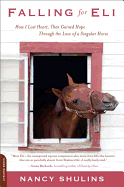
| Publisher: | Da Capo | |
| Genre: | Pets, General, Biography & Autobiography, Horses, Personal Memoirs | |
| ISBN: | 9780738215273 | |
| Pub Date: | April 2012 | |
| Price: | $15.99 |
| Biography & Memoir |
by Nancy Shulins
Nancy Shulins begins this memoir with the devastating realization that she will never become a mother. Surrounded by fertile neighbors and a baby stroller on every corner, Shulins struggles to leave her house and is in danger of succumbing to depression. Fortunately, an off-the-track Thoroughbred enters her life and a new dream begins.
Shulins's prose is a pleasure to read. She vividly depicts the dedication and passion required to love a horse long-term, as well as the limitless rewards in doing so. Shulins explores many facets of horse ownership--from the fear many riders experience atop an unpredictable, 1,200-pound animal to the inherent fragility of these massive, majestic creatures. Initially hoping to master the art of dressage riding, Shulins endures a number of strict, relentless trainers and must face her own fears and insecurities in order to find a trainer who is as compassionate as she is talented.
As Shulins shares her challenges and triumphs with Eli--her lovable but injury-prone gelding--and nurses him back from a series of ailments, including lameness, hives, Equine Protozoa Myeloencephalitis and a fractured shoulder, her heart is healed as well. The last line of her acknowledgments exemplifies the extent to which the former Associated Press special correspondent is able to embrace her new reality: "I wish to express my admiration for the countless women who have cobbled together their families from hooves and hearts, feathers, and fur. You are all mothers in my book." -- Kristen Galles from Book Club Classics

| Publisher: | Prometheus Books | |
| Genre: | Health & Fitness, General, Social Science, Medical, Health Policy, Disease & Health Issues | |
| ISBN: | 9781616145934 | |
| Pub Date: | April 2012 | |
| Price: | $24 |
| Health & Medicine |
by Martha Rosenberg
Born with a Junk Food Deficiency, Martha Rosenberg's exposé of Big Pharma and agribusiness, argues that multibillion-dollar corporations bilk consumers, leading them down paths of self-destruction with little consequence. It begins with the role pharmaceutical companies play in stoking the widespread American impulse toward self-medication and hypochondria and pushing new and untested products into off-label uses, often rewarding physicians and federal experts for their participation in marketing campaigns.
Yet medications are not the only evils that Big Pharma wreaks, the author writes. Agribusiness promotes and uses antibiotics, hormones and other harmful chemicals, often without scientific grounding, in order to provide the public with cheap nourishment. Rosenberg's title points to the difficulty consumers have distinguishing fact from fiction when bombarded with wildly contrasting tidbits of information by industry insiders, FDA experts and various pundits who may not have our best interests at heart. The images Rosenberg delineates have the same sickening power as those in the unflattering corporate food documentary, Food, Inc., and she makes no attempt to disguise her contempt for and astonishment at the American food system. While no one can deny that her exposé skews along the lines of animal activism, her heavily researched reportage will make readers pause to consider what might be lurking in their next meal. --Nancy Powell, freelance writer
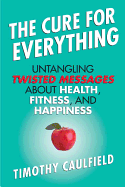
| Publisher: | Beacon Press | |
| Genre: | Health & Fitness, General, Public Health, Ethics, Medical | |
| ISBN: | 9780807022054 | |
| Pub Date: | April 2012 | |
| Price: | $24.95 |
| Starred | Health & Medicine |
by Timothy Caulfield
Timothy Caulfield's inspiration for The Cure for Everything came from "an obsession with facts... a personal interest in health and fitness, and two decades of involvement with science policy." The result is a highly informative, often surprising, thoroughly entertaining handbook to health that focuses on four areas: fitness, diet, genetics and remedies.
The first section begins by differentiating fitness from simply "looking good." Caulfield debunks the myth that exercise alone will result in weight loss and learns that true fitness involves high-intensity circuit training with heavy weights. In the section on diet, he verifies that portion control is the key to weight loss; while researching this section, Caulfield lost more than 20 pounds by following the basic principles of a healthy diet: 50% fruits and vegetables; 25% whole grains; 25% meat and dairy.
He then discovers that genetic research is largely funded by "addiction industries"--gambling, junk food, alcohol and especially tobacco. In the section on remedies, he attempts to overdose on homeopathic sleeping pills (and fortunately fails). In addition to debunking naturopathic and homeopathic "cures," he also exposes the influence of Big Pharma over conventional medicine, emphasizing the necessity of an independent entity to conduct all clinical trials.
While many of his findings are surprising, Caulfield's ultimate conclusion is not: "There are no magical cures or programs," he writes. "Exercise often and with intensity... eat small portion sizes [of whole foods], try… to maintain a healthy weight... do not smoke... drink moderate amounts of alcohol." While a magic cure for everything may seem easier, the true path to fitness simply requires hard work and discipline. --Kristen Galles from Book Club Classics
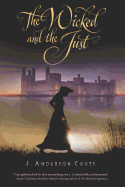
| Publisher: | Harcourt | |
| Genre: | Girls & Women, Prejudice & Racism, Social Issues, Juvenile Fiction, Action & Adventure, Europe, Historical | |
| ISBN: | 9780547688374 | |
| Pub Date: | April 2012 | |
| Price: | $16.99 |
| Starred | Children's & Young Adult |
by J. Anderson Coats
The voices of two female narrators sweep readers along in this gripping debut novel set in 13th-century Wales, tightly controlled by the English.
Cecily deserves a life of luxury, especially after she and her widower father were cast out of her uncle's home when he returned from war. She orders Mistress Tipley and Gwenhwyfar about as if she were head of the household. But Cecily doesn't realize that the local English-appointed government usurped the homes and household goods of the Welsh to set up English burgesses like Cecily's father. As the English to bend the Welsh to their will, the Welsh have other ideas about reclaiming what's rightfully theirs. And while Cecily tries to amass pretty dresses befitting a burgess's daughter, Gwinny fights to keep her ailing mother alive and her brother safe from harm.
The title comes from Cecily's growing awareness of the injustices incurred by innocent Welsh citizens, and Gwinny's slow thaw where "my brat," as she calls Cecily, is concerned. "Justice for those who deserve it," Cecily says while pulling a prank on a power-hungry official. Debut novelist Coats creates a harrowing picture of life as two cultures clash. Through the keen observations and sharp wit of Cecily and Gwinny's first-person narratives ("God save me from being a shrewish harridan when I'm grown," thinks Cecily about her highborn neighbors), we see they're more alike than different. Their senses of humor leaven the life-or-death circumstances in which they find themselves. Riveting. --Jennifer M. Brown, children's editor, Shelf Awareness

| Publisher: | Owlkids | |
| Genre: | Imagination & Play, Juvenile Fiction | |
| ISBN: | 9781926973166 | |
| Pub Date: | April 2012 | |
| Price: | $15.95 |
| Children's & Young Adult |
by Martine Audet, trans. by Sarah Quinn, illust. by Luc Melanson
This charming picture book is an homage to imagination masquerading as a first-day-of-school story.
Martin's daydreams help him cope with a new classroom. "My name is Martin," he begins, then adds, taking in the other students, "I wonder what their names are." His teacher's hair is the same color as his cat, Happy, and her pink cheeks remind him of his Mum Mum, "[but] she doesn't have Mum Mum's big smile." The illustration depicts the boy's thought process with a spot image of Happy above the text, and a full-page illustration of Martin's teacher at the head of the classroom, with her hair sculpted to resemble the cat's ears, her eyes the same shape and shade as the feline's. The line about his Mum Mum's smile sends Martin off on a stream-of-consciousness reverie. Her "smile is as wide as the river," he thinks, and is flooded with memories of a summer's drive along the river. He tries to reel himself back: "[T]oday is the first day of school, and I'm here to learn.... No walking on the moon today." This is clearly a familiar strategy.
When his teacher spies him daydreaming, she asks, "Where are you, Martin? On the moon?" But she says it with "a smile as wide as the river." The author creates a curious hero and a classroom environment where he can flourish, and Melanson's visual mix of the literal and the symbolic is spot-on for early elementary students. --Jennifer M. Brown, children's editor, Shelf Awareness
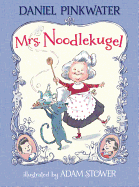
| Publisher: | Candlewick Press | |
| Genre: | Fantasy & Magic, Juvenile Fiction | |
| ISBN: | 9780763650537 | |
| Pub Date: | April 2012 | |
| Price: | $14.99 |
| Children's & Young Adult |
by Daniel Pinkwater, illust. by Adam Stower
Fans of Mrs. Piggle-Wiggle will adore Mrs. Noodlekugel, the latest invention from the curious mind of Daniel Pinkwater (children's book advocate on NPR's Weekend Edition and author of The Hoboken Chicken Emergency).
Mrs. Noodlekugel may not have an upside-down house, but her little old-fashioned abode is nestled in a forest of skyscrapers and surrounded by a yellow picket fence. An aroma of cookies wafts through the windows, and a hint of magic lingers about (just like Mrs. Piggle-Wiggle). Maxine, the first to spy the cozy cottage, shows it to her brother, Nick, and they seek out Mike the janitor to gain entry. Mike points the way, then says, "Do not tell your parents I told you." The siblings discover a serene oasis in Mrs. Noodlekugel's home and yard. Mr. Fuzzface, the cat, welcomes them, then serves tea and cookies as the children get acquainted with their kind hostess. Adam Stower's ink drawings of the zaftig woman and her welcoming household make the fantastical proceedings feel plausible.
Pinkwater can make urban sprawl feel like a small town. Maxine and Nick's parents employ a bit of reverse-psychology, warning their children away from the kindly woman. But when brother and sister call them on their tactics, their parents promptly fess up, revealing they've lined up Mrs. Noodlekugel as their babysitter. Short chapters, abundant illustrations, and pointed repetition make this an ideal first chapter book. This funny, charming tale proves one needs look no further than his own backyard for adventure. --Jennifer M. Brown, children's editor, Shelf Awareness